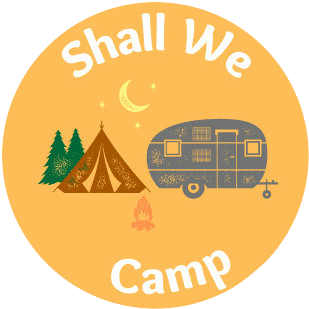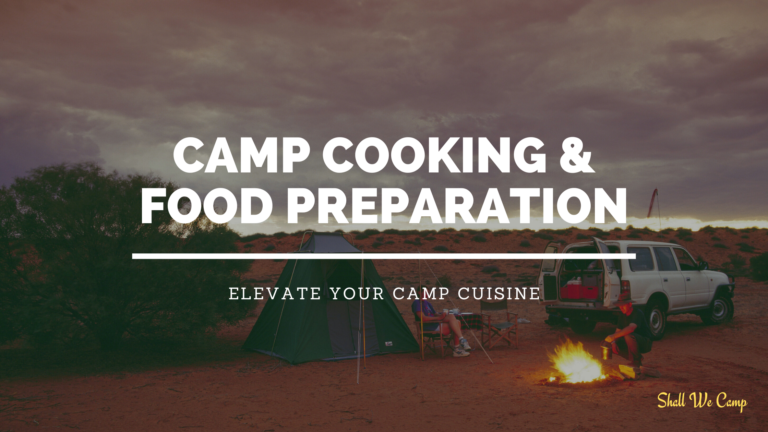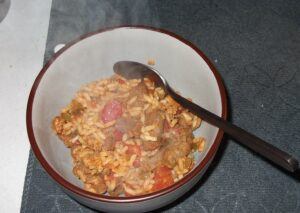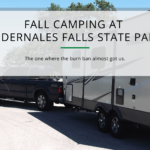For any camping enthusiast, there's one thing that can instantly transport you to the heart of a camping adventure. It is the sound of a crackling campfire and the promise of a hearty, delicious meal in the outdoors. Whether you're a seasoned camper or just starting to get into camping, there's something truly magical about whipping up meals amidst the great outdoors.
But is camp cooking just about canned beans and marshmellows? Absolutely not!
In this article we will take an elevated view on camp cuisine and take a deep dive into the art of camp cooking and food preparation. We're talking about creating gourmet-worthy dishes that will have your fellow campers asking for seconds and thirds.
From choosing the perfect cooking method to creating well-balanced and nutritious meals that fuel your adventures, this guide is your recipe for success. Get ready to learn some tips, tricks, and secret hacks that will elevate your camping experience from just another trip to a delicous culinary adventure under the stars.
How to Cook Over a Campfire: Tips and Techniques
When it comes to camping, there's something undeniably magical about cooking your meals over a crackling campfire. The dancing flames, the woodsy aroma, and the sizzle of your food hitting the grill. It's a sensory experience like no other.
But to truly master campfire cooking, you will need more than just a skewer and a marshmallow. So let's dive into some tips and techniques that will help you enjoy cooking over the fire.
Choosing the Right Campfire Cooking Method
Before getting started, you'll want to decide on the best cooking method for your campfire cuisine.
- Direct Flame – A classic method of cooking directly over the flame. This usually requires skewers or a grill grate and it's perfect for roasting marshmellows or hot dogs.
- Campfire Grill – This method is great for cooking hamburgers or veggies.
- Dutch Oven – Dutch ovens are ideal for slow-cooking stews, casseroles, and even baking bread. Placing coals on the lid of the oven will evenly distribute heat.
Campfire Cooking Safety: Dos and Don'ts
Safety around the campfire is extremely important. Here are a few dos and dont's to keep in mind:
- Do: Keep a bucket of water or a fire extinguisher nearby for emergencies.
- Don't: Never leave your campfire unattended, even for a moment.
- Do: Use long cooking utensils to keep your hands and arms away from the flames.
- Don't: Avoid using flammable oils or sprays near an open flame.
Delicious Campfire Recipes for Beginners:
Now, let's talk about what to cook! For beginners, it's wise to start with simple yet satisfying recipes:
Campfire Quesadillas: Wrap your favorite fillings in tortillas, wrap them in foil, and place them on the grill. The variations are endless and can be easily tailored to your particular tastes.
Foil Packet Meals: Chop up some veggies, add your protein of choice, season to taste, wrap it all in aluminum foil, and toss it on the grill. Cleanup is a breeze!
S'mores Variations: Elevate your s'mores game with creative additions like peanut butter cups, sliced bananas, or even bacon.
Ways to Elevate Your Camp Cooking Game

While there's nothing wrong with classics like marshmallows and hotdogs, let's explore some ways to elevate your camp cooking game and create mouthwatering meals that will have your camping buddies begging for more. Get creative, experiment with flavors, and most importantly, savor every bite.
Creative Campfire Skewer Ideas for Gourmet Meals
Skewers are not only great for roasting marshmallows, but they are also a versatile tool for gourmet campfire cooking
Shish Kebabs: Mix pieces of marinated meat with colorful bell peppers, onions, and mushrooms for a flavorful and visually appealing meal.
Fruit Kabobs: For a sweet twist, thread pineapple chunks, strawberries, and marshmallows or pound cake on skewers, then drizzle with chocolate for a dessert that's campfire perfection.
Cinnamon Sugar Campfire Twists: Roll out strips of biscuit dough, wrap them around skewers, cook them over the fire, and finish with a sprinkle of cinnamon sugar.
One-Pot Camping Meals: Easy and Flavorful Recipes
Campfire Chili: Brown ground beef (or your favorite ground meat), add beans, tomatoes, and chili spices, then let it simmer in a Dutch oven. Top it off with shredded cheese and dig in.
Spaghetti Aglio e Olio: Boil pasta in a pot, then toss it with olive oil, garlic, red pepper flakes, and a handful of grated Parmesan cheese. Simple yet divine.
Camping Jambalaya: Throw together rice, chicken, sausage, shrimp, and a medley of veggies in your Dutch oven for a taste of the Louisiana bayou, right in the great outdoors.
Dutch Oven Cooking: Mastering the Art of Outdoor Cuisine
If you're not already using a Dutch oven, it's time to discover their incredible versatility.
Baking Bread: Yes, you can bake crusty loaves of bread in a Dutch oven over the campfire. The results are nothing short of spectacular.
Dutch Oven Pizza: Prepare pizza dough, add your favorite toppings, and let your Dutch oven work its magic. It's like having a pizzeria in the wilderness.
Cobbler Creations: Top fresh berries or canned pie filling with cake mix in your Dutch oven, and voilà, you have a scrumptious cobbler that'll satisfy your sweet tooth.
Cooking Healthy Meals While Camping
Have you ever wondered if camping and healthy eating can go hand in hand? Spoiler alert: they absolutely can! Let's dive into the wonderful world of nutritious campsite cuisine.
Nutritious Camping Meal Ideas for Health-Conscious Campers
Eating healthy while camping doesn't mean you have to sacrifice flavor or convenience. Here are some meal ideas to keep you energized and satisfied and still allow you to stick to your diet.
Morning Power Bowls: Start your day with a hearty breakfast bowl featuring Greek yogurt, fresh berries, granola, and a drizzle of honey. It's packed with protein and vitamins.
Trail Mix Bliss: Create your custom trail mix with a mix of nuts, dried fruits, and a dash of dark chocolate chips for a nutritious on-the-go snack.
Grilled Veggie Delight: Fire up the campfire grill and load it with colorful veggies like bell peppers, zucchini, and asparagus. Drizzle with olive oil, sprinkle with your favorite herbs, and grill to perfection.
Quinoa Salad: Prepare quinoa ahead of time and toss it with cherry tomatoes, cucumbers, feta cheese, and a lemon vinaigrette for a refreshing and filling lunch.
Packing Fresh Ingredients: Keeping Your Meals Balanced
One key to eating healthy while camping is planning ahead and packing fresh ingredients. The same techniques that apply at home can easily be adapted to the camping cuisine.
Pre-Cut Veggies: Chop your veggies at home and store in airtight containers. They'll be ready to use, and you won't need to lug a cutting board around.
Fresh Herbs: A few sprigs of fresh herbs like basil, mint, or cilantro can elevate the flavor of your campsite dishes.
Protein Packs: Bring along lean proteins like chicken, fish, or tofu, securely wrapped and stored in a cooler with ice packs.
Smart Snacking: Instead of chips, opt for snacks like carrot sticks, zucchini slices, apple slices, or whole-grain crackers. They're satisfying and nutritious.
Does Camp Cooking Require Special Equipment?
You do not necessarily need fancy gear to whip up delicious campfire meals. But having the right camping equipment can make your outdoor culinary adventures a whole lot easier and more enjoyable.
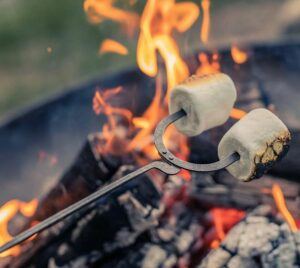

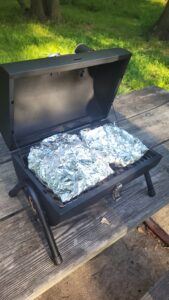
Essential Camp Cooking Gear: What You Need in Your Kit
- Portable Camp Stove: While you can certainly cook over an open flame, a portable camp stove is a game-changer. They're lightweight, easy to use, and provide precise temperature control for cooking various dishes.
- Cookware Set: Invest in a good camp cookware set that includes pots, pans, and lids. Look for options with non-stick surfaces for easier cleanup.
- Cooking Utensils: Pack a set of long cooking utensils – spatula, tongs, and a ladle. They'll keep your hands away from the flames and make flipping pancakes a breeze.
- Camping Table: A folding camping table can be a lifesaver for food prep and serving. It keeps everything organized and off the ground.
- Cooler: If you plan to bring perishable items like fresh meat and dairy, a good cooler with ice packs is essential.
- Dutch Oven: If you love slow-cooked meals and baking in the great outdoors, a Dutch oven is worth the investment. It's like having an oven in your campsite.
Portable Camp Stoves vs. Campfires: The Age-Old Debate
Camp Stoves:
- Pros: They're quick to set up, offer precise heat control, and work well in windy or wet conditions.
- Cons: You'll need to carry fuel canisters, and they might lack the ambiance of a crackling fire.
Campfires:
- Pros: They're a quintessential camping experience, perfect for roasting marshmallows and hotdogs.
- Cons: Campfires can be unpredictable, require more time to set up, and may not be allowed in some areas due to fire restrictions.
How to Set Up a Functional Camp Kitchen
A well-organized camp kitchen can make your outdoor cooking adventures a breeze. So, let's take a look at what it takes to create a functional camp kitchen that'll have you cooking like a pro.
Organizing Your Camp Kitchen: Tips for Efficient Layout
- Location, Location, Location: First things first, pick the perfect spot for your camp kitchen. You'll want it close to your campfire (if you're cooking over an open flame) and not too far from your dining area.
- Prep Zone: Designate an area for prepping food. It's best to use a clean, flat surface like a camping table. If you're cutting veggies or meat, a separate cutting board is a must for food safety.
- Cooking Area: Set up your camp stove or grill at a safe distance from flammable materials and under a sturdy overhead windscreen if possible. This helps with heat retention and efficient cooking.
- Storage Solutions: Use bins, crates, or hanging organizers to keep your cookware, utensils, and ingredients neatly organized. Labeling bins can save you from rummaging around for that one spice jar.
- Trash Management: Always bring trash bags and a designated container to store your waste. Leave no trace – it's not just a slogan; it's a way of life for responsible campers.
Camp Kitchen Essentials Checklist
Cooking Utensils: Long utensils like spatulas and tongs to keep your hands safe from the flames.
Pots and Pans: A good set of camp cookware with non-stick surfaces for easy cooking and cleaning.
Cooking Fuel: Whether it's canister fuel for your camp stove or firewood for your campfire, bring enough for your entire trip.
Plates and Utensils: Reusable or eco-friendly options are great for reducing waste.
Coffee or Tea Set: If you're a caffeine aficionado, a portable coffee maker or kettle is a game-changer.
Dishwashing Supplies: Biodegradable soap, a scrubber, and a basin for washing dishes are essential.
Spices and Condiments: A small spice rack with your favorites and some sauces to add flavor to your dishes.
Food Storage: Ziplock bags, airtight containers, or vacuum-sealed bags to keep your ingredients fresh.
Final Thoughts
As you embark on your next camping trip, keep these camp cooking tips and techniques in mind. Remember that camp cooking is not just about sustenance. It's about creating memorable experiences around the campfire. It's about the sizzle of your food, the laughter of friends, and the beauty of nature as your backdrop.
Whether you're grilling with skewers, simmering a one-pot wonder, or baking bread in a Dutch oven, camp cooking offers a world of possibilities. It's a chance to experiment with flavors, get creative with ingredients, and share the joy of a home-cooked meal with fellow campers.
Whether you're a seasoned outdoor chef or a newbie with a passion for food, the great outdoors offers a canvas for your culinary creativity.
